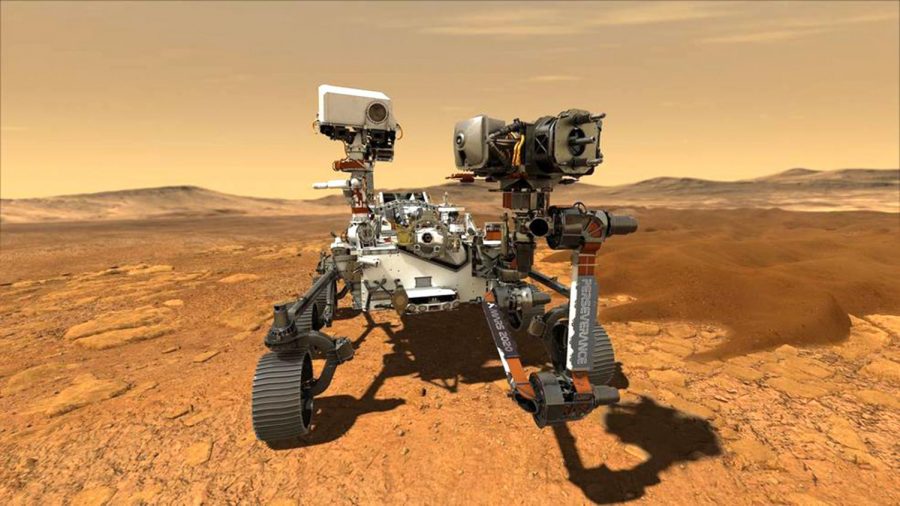NASA’s Perseverance lands on Mars
An illustration pictures NASA’s rover Perseverance on the surface of Mars.
May 21, 2021
NASA’s rover safely landed on Mars on February 18 after a nearly six-month journey through space.
Perseverance, the name of this extravagant rover, is about the size of a car and carried a small robotic helicopter, known as Ingenuity. Not only will these robots bring forth the most advanced technology Mars has seen, but it will also provide scientists with information that will enhance their knowledge on whether human exploration in that environment is safe.
For this mission, NASA highlighted several goals they want to see Perseverance accomplish. One is to determine whether or not life ever existed on Mars. Using Perseverance, scientists hope to analyze rock samples and find preserved signs of microbial life. If evidence shows that there were signs of life on this planet, it is possible that conditions on Mars had once been suitable for organisms to thrive in. Additionally, the rover is designed and equipped with tools to help with the characterization of past Martian climate and the current geology of Mars. It was built in such a way where it can collect soil and rock samples that could possibly be sent back to Earth.
If Perseverance is able to accurately study how Mars’ crust was formed, it can determine the type of weather each layer was created in. This information would be incredibly useful to scientists because it can reveal its potential for harboring life.
Another objective Perseverance was built for is to give scientists knowledge on how to prepare for human exploration on Mars. By observing environmental conditions, future mission planners will be able to figure out how to protect potential human explorers. Since this red planet lacks an ozone layer, there would be a harmful amount of radiation to future humans on Mars. With more information and data from the rover, engineers can design a space suit to suppress the excessive effects of the UV radiation on astronauts. Perseverance will be a great help to NASA as they hope to send humans to Mars sometime after 2030.
NASA wants Ingenuity, the four-pound robotic helicopter attached to Perseverance, to attempt the first powered and controlled flight on another planet.
Before its attempted flight, Ingenuity needs to be on a flat 33ft by 33ft Martian land and needs to be visible by Perseverance. The plan is for the helicopter to be up to 10 feet in the air only for about 20-30 seconds. Even though this seems like a short period of time, this is still a major breakthrough because it will be the first powered flight in an entirely new, thin atmosphere. NASA also expressed that they will attempt other flights with varying altitudes and time periods in air.
This particular mission will provide NASA with new information that will help them look for previous signs of life, understand its past and current climate, collect rock and soil samples for further research, and prepare for future human exploration.

